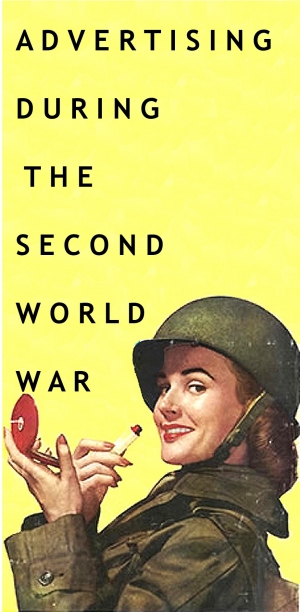
- from Amazon
 Two Weeks after the Pearl Harbor attack, the New York fashion industry hastily manufactured profiles that were both feminine and practical for the new lives American women were about to have thrust upon them. Overnight, durable and launderable fabrics became uppermost in the thinking of the new war workers and culottes gained greater importance as the need for bicycles became a viable mode of transport for getting to the defense plants. In the Digital Age we simply don't think much about pants on women - but they sure thought about it in the Forties - and everyone was expected to have an opinion on the subject. This article is about the dust-up that was caused at a new Jersey high school when some of the girls came to school in pants. Eleven months before America's entry into the war found sailor suits playing a heavy role in the thought processes of the Great American Fashion Designers.
Click here to read about the military influence on W.W. I fashion... Five fashion photographs and a few words on the "government-approved" look for the autumn of 1943. The wartime fashion news for 1943 was apparel order L-85 that had been issued by the War Production Board in order to "conserve material for victory".
To read another article about 1940s fashions and the hardships of fabric rationing, click here. Click here to read about the fashion silhouette of the early Fifties. New York fashion journalist Gertrude Bailey wasted no time in applying for her overseas press pass upon hearing the news that the Germans had been driven from the banks of the Seine in August of '44. Although the fashion column she filed largely anticipated the glorious return of Paris chic, mention was also made of what Paris fashion was like during the German occupation - sitting ringside at one of the runways, Bailey found that
"One found significance in the appearance of green as a color, and noted that the reason it had been absent for four years was because it was the color of the German uniform, which no Frenchwoman would wear until France was free."
In their book about American soldiers in the war-torn Britain of W.W. II, Overpaid, Over-Sexed and Over Here (1991), authors James Goodson and Norman Franks recall how thoroughly impressed Americans were with the standard issue British Army uniform. The Supreme Allied Commander, U.S. General Dwight Eisenhower, was no exception - he promptly ordered his tailor to suit him in a similar get-up. Other American generals followed in his path as did the cocky young pilots of the Army Air Corps - shortly there after the look soon spread to other branches of the Army. This 1944 article discusses the broad appeal of this jacket and that civilian fashion designers had begun manufacturing the "Ike Jacket" for the Home Front. (1991), authors James Goodson and Norman Franks recall how thoroughly impressed Americans were with the standard issue British Army uniform. The Supreme Allied Commander, U.S. General Dwight Eisenhower, was no exception - he promptly ordered his tailor to suit him in a similar get-up. Other American generals followed in his path as did the cocky young pilots of the Army Air Corps - shortly there after the look soon spread to other branches of the Army. This 1944 article discusses the broad appeal of this jacket and that civilian fashion designers had begun manufacturing the "Ike Jacket" for the Home Front. |